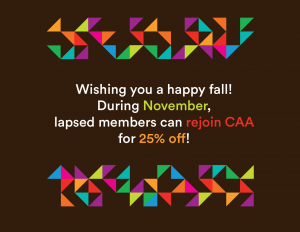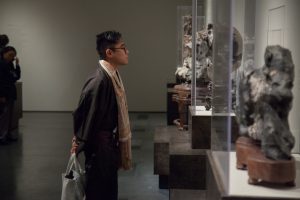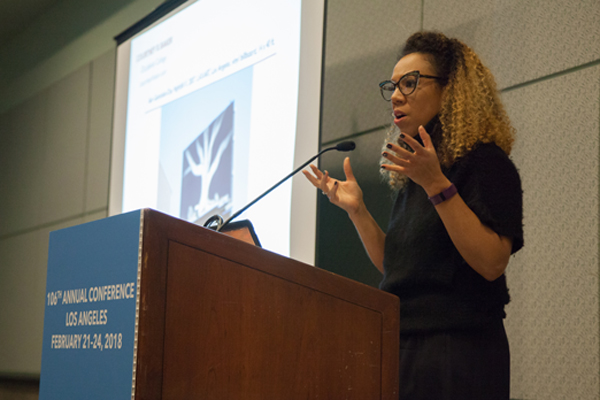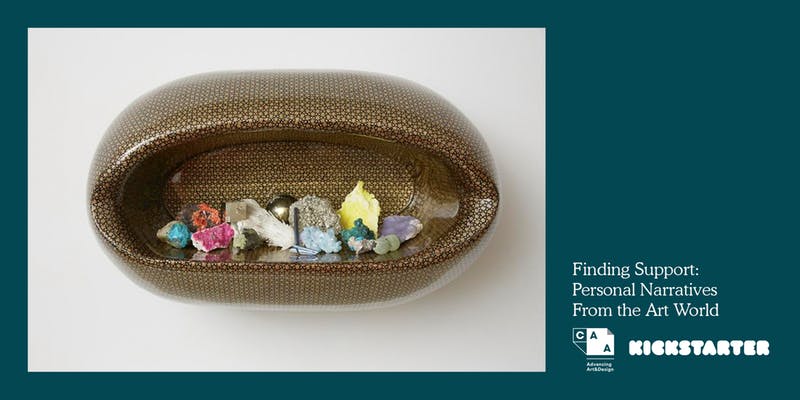CAA News Today
CAA Announces 2019 CAA-Getty International Program Participants
posted by CAA — Nov 02, 2018
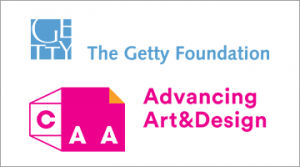
CAA is pleased to announce this year’s participants in the CAA-Getty International Program. Now in its eighth year, this international program supported by the Getty Foundation will bring fifteen new participants and five alumni to the 2019 Annual Conference in New York City. The participants—professors of art history, curators, and artists who teach art history—hail from countries throughout the world, expanding CAA’s growing international membership and contributing to an increasingly diverse community of scholars and ideas. Selected by a jury of CAA members from a highly competitive group of applicants, participants will receive funding for travel expenses, hotel accommodations, conference registration, CAA membership, and per diems for out-of-pocket expenditures.
At a one-day preconference colloquium, to be held this year at Parsons School of Design, the fifteen new participants will discuss key issues in the international study of art history together with five CAA-Getty alumni and several CAA members from the United States, who also will serve as hosts throughout the conference. The preconference program will delve deeper into subjects discussed during last year’s program, including such topics as postcolonial and Eurocentric legacies, interdisciplinary and transnational methodologies, and the intersection of politics and art history.
This is the second year that the program includes five alumni, who provide an intellectual link between previous convenings of the international program and this year’s events. They also serve as liaisons between CAA and the growing community of CAA-Getty alumni. In addition to serving as moderators for the preconference colloquium, the five alumni will present a new Global Conversation during the 2019 conference titled Creative Pedagogy: Mapping In-between Spaces Across Cultures.
The goal of the CAA-Getty International Program is to increase international participation in the organization’s activities, thereby expanding international networks and the exchange of ideas both during and after the conference. CAA currently includes members from over 50 countries around the world. We look forward to welcoming the following participants at the next Annual Conference in New York City.
2019 PARTICIPANTS IN THE CAA-GETTY INTERNATIONAL PROGRAM
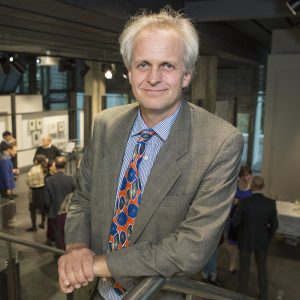
Richard Bullen is associate professor of art history at the University of Canterbury, New Zealand. He graduated with a PhD from the University of Otago in 2003. Bullen’s principal areas of research are Japanese aesthetics and East Asian art collections in New Zealand. During his years living in Japan, he studied tea ceremony and calligraphy and has since published on aspects of tea ceremony aesthetics. With James Beattie he recently completed a major publicly-funded project to document New Zealand’s largest collection of Chinese art, the Rewi Alley Collection at Canterbury Museum. Their website catalogues all 1400 objects in the collection: http://www.rewialleyart.nz. Together, they also have produced a number of publications, including New China Eyewitness: Roger Duff, Rewi Alley and the Art of Museum Diplomacy (2017) and co-curated three exhibitions. Bullen is currently working on art made in World War II by Japanese POWs held in Australasia.
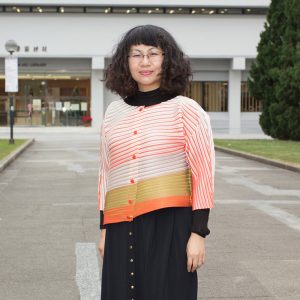
Pedith Chan is an assistant professor of Cultural Management in the Faculty of Arts at the Chinese University of Hong Kong. She received her PhD in Art and Archaeology from SOAS, University of London. Before joining the Chinese University of Hong Kong Chan was an assistant curator at the Hong Kong Museum of Art, and an assistant professor at the City University of Hong Kong. Her research interests focus on the production and consumption of art and cultural heritage in modern and contemporary China. Recent publications include The Making of a Modern Art World: Institutionalization and Legitimization of Guohua in Republican Shanghai (Leiden: Brill, 2017), “Representation of Chinese Civilization: Exhibiting Chinese Art in Republican China,” in The Future of Museum and Gallery Design (London: Routledge, 2018), and “In Search of the Southeast: Tourism, Nationalism, Scenic Landscape in Republican China,” (Twentieth-Century China, 2018). She is currently researching the making of scenic sites in modern China.
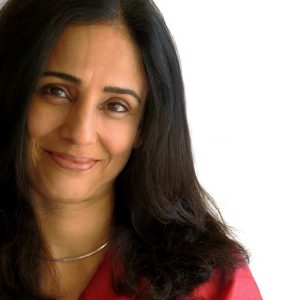
Swati Chemburkar is an architectural historian who lectures and directs a diploma course on Southeast Asian Art and Architecture at Jnanapravaha, a center for the arts in Mumbai, India. In addition, she is a visiting lecturer at the School of Oriental and African Studies (SOAS), London, and SOAS’s summer schools in Southeast Asian countries. Chemburkar’s work focuses on eighth- through twelfth-century Southeast Asia, particularly the relationship between texts, rituals, art, architecture, and cross-cultural exchanges in maritime Asia. Her ongoing research explores the spread of the ancient Śaiva sect of Pāśupatas in this region. She has edited Art of Cambodia: Interactions with India (Marg Magazine, Volume 67 Number 2, December 2015-March 2016) and contributed papers to several journals and publications, including the recent “Visualising the Buddhist Mandala: Kesariya, Borobudur and Tabo” in India and Southeast Asia: Cultural Discourse (K. R. Cama Oriental Institute, Mumbai, 2017) and “Pāśupata Sect in Ancient Cambodia and Champa” (co-authored with Shivani Kapoor) in Vibrancy in Stone: Masterpieces of the Đà Nẵng Museum of Cham Sculpture (River Books, 2017).
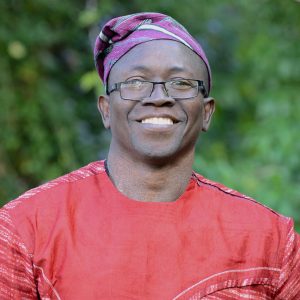
Stephen Fọlárànmí is a senior lecturer in the Department of Fine & Applied Arts, Ọbáfémi Awólọ́wọ̀ University, Ilé-Ifè, Nigeria. His research focuses on Yoruba art and African mural art and architecture. In particular, Fọlárànmí’s extensive research on the art and architecture of the Òyó and Iléṣà palaces has been published in journals, conference proceedings, and as book chapters. A recent example, “Palace Courtyards in Iléṣà: A Melting Point ofTraditional Yorùbá Architecture,” co-authored with Adémúlẹ̀yá, B.A., was published in Yoruba Studies Review 2, no. 2 (Spring 2018): 51-76. Fọlárànmí was a recipient of the first Höffmann-Dozentur für Interkulturelle Kompetenz at University of Vechta, Germany (2008-09). As an artist Fọlárànmí has exhibited his work in Nigeria, London, Germany, and the United States. He was the chair of the Department of Fine and Applied Arts, Obafemi Awólọ́wọ̀ University, Ile-Ife, between August 2016 and January 2018. Currently, he is a research fellow in the Fine Arts Department, Rhodes University, Grahamstown, South Africa.
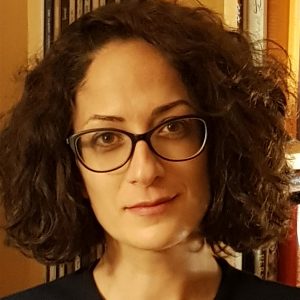
Negar Habibi is a Persian art historian and lecturer in Islamic art history at the University of Geneva, Switzerland, where she teaches history of Persian painting from early Islamic times until the modern era. She completed a PhD in 2014 in art history at the Aix-Marseille University in France with a dissertation titled “The Farangi sāzi and Paintings of Ali Qoli Jebādār: an Artistic Syncretism under Shah Soleymān (1666-1694).” Habibi conducts research on paintings from early modern Iran. Adopting a multidisciplinary approach, her work focuses on the career and life of the artist, especially issues of signature authenticity, gender, and artistic patronage in early modern Iranian society. She has published several articles on the art and artists of late-seventeenth-century Iran, and her book titled Ali Qoli Jebādār et l’occidentalisme safavide: une étude sur les peintures dites farangi sāzi, leurs milieux et commanditaires sous Shah Soleimān (1666-94) was published in January 2018 by Brill.
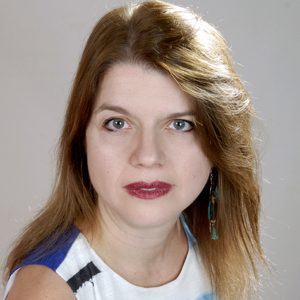
Iro Katsaridou has been the curator of modern and contemporary art at the Museum of Byzantine Culture in Thessaloniki, Greece since 2005. She studied art history at the Aristotle University of Thessaloniki and the Université Paris I-Sorbonne, and also pursued museum studies at the City University of New York. Her doctoral dissertation (Aristotle University, 2010) focused on contemporary Greek photography from 1970-2000. For the past five years Katsaridou has been researching historical photography in Greece, seeking to unravel the role of politics in the formation of photographic representations. In this particular field she also has curated exhibitions of photography and art in wartime (World War I and II) and edited related catalogues. She has co-edited a book about photography during the Nazi Occupation of Greece (1941-1944) and written articles and book chapters on photography (both historical and contemporary), exhibition display policies, as well as the relationship between contemporary Greek art and politics.
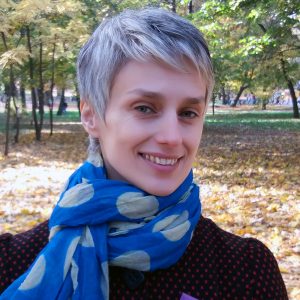
Halyna Kohut is an associate professor in the Faculty of Culture and Arts at the Ivan Franko National University of Lviv, Ukraine, where she teaches history of art, contemporary art, and history of theatrical costume. Originally educated as a textile artist, she received a PhD from the Lviv National Academy of Arts with a dissertation on seventeenth- and eighteenth-century Ukrainian kilims. She is the recipient of scholarships and grants from the Austrian Agency for International Mobility and Cooperation in Education, Science and Research, the Canadian Institute of Ukrainian Studies at the University of Alberta, and the Queen Jadwiga Foundation at the Jagiellonian University in Cracow. Kohut studies Ukrainian kilims as an intermediate zone between Oriental and Western design traditions formed on the so-called Great cultural frontier between the Christian West and Islamic East. She is especially interested in the migration of ornamental patterns as well as the articulation of textile’s social and political meanings in the historical context.
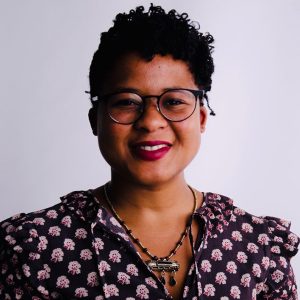
Zamansele Nsele is an art historian and a lecturer in design studies in the Faculty of Art, Design and Architecture at the University of Johannesburg, South Africa. She recently submitted her doctoral thesis in Art History & Visual Culture, titled Post-Apartheid Nostalgia and the Future of the Black Visual Archive. In 2018, Nsele was included in the Mail & Guardian’s prestigious list of Top 200 Young South Africans. She has presented her PhD research at Vanderbilt University and Rutgers University (USA), the University of East Anglia (UK), the University of Ghana in Accra (Ghana), and Rhodes University and the University of Cape Town (South Africa). In July 2018, she was a guest speaker at the Museum Conversations Conference hosted by the University of Namibia and the Goethe-Institut Namibia. Her research interests include post-Apartheid nostalgias, contemporary African art, blackface minstrelsy in South African visual culture and Africana studies.
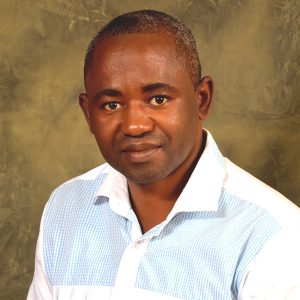
Chukwuemeka Nwigwe is a Nigerian artist and art historian who teaches fashion/textile design and art history at the University of Nigeria Nsukka. He holds a PhD in art history, MFA in textile design, and BA in fine and applied arts from the same university. Nwigwe’s current research is on identity, exemplified in two recent publications: “Fashioning Terror: The Boko Haram Dress Code and the Politics of Identity” (Journal of Fashion Theory, January 2018) and “Breaking the Code: Interrogating Female Cross Dressing in Southeastern Nigeria” (posted online as part of a 2018 ACLS African Humanities Program Postdoctoral Fellowship). Nwigwe also practices as a studio artist. His recent studio experiments with waste plastic, synthetic bags, and foil wrappers, usually woven arbitrarily, have been influenced largely by his research on bird nests begun during his MFA studies.
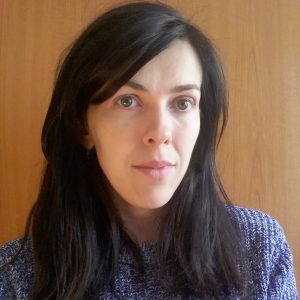
Oana Maria Nicuță Nae is an assistant professor in the Department of Art History and Theory, Faculty of Visual Arts and Design, George Enescu National University of Arts, Iasi, Romania. She received a PhD in art history from the same university, where she currently teaches courses on the history of modern European art, the history of design, and art and society in modern Europe. Most recently she published “The Materialization of Light in the Art of the (Neo-) Avant-Gardes,” in Objects and Their Traces: Historical Gazes, Anthropological Narratives, Cristina Bogdan, Silvia Marin Barutcieff (coord.), Bucharest University Press (Bucharest, 2018). Nicuță Nae’s current research focuses on the representation of women in Romanian modern art. She also studies multiple modernities, taking into account the particular position of Romanian art narratives in regional and global attempts to construct encompassing ones. Recently she has started parallel research on the notion of influence in nineteenth-century Romanian and European art.
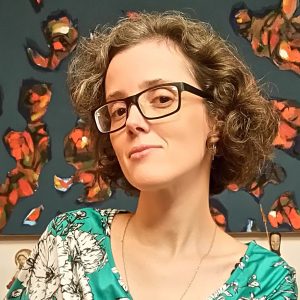
Tamara Quírico is an associate professor in the Art Institute of the Universidade do Estado do Rio de Janeiro (State University of Rio de Janeiro, UERJ, Brazil), where she teaches courses to undergraduate students majoring in art history and visual arts and art history courses to graduate students pursuing MA and PhD degrees. She earned her PhD in social history from the Universidade Federal do Rio de Janeiro, in a joint supervision program with the Università di Pisa (Italy), in which she studied changes in the iconography of the Last Judgment in fourteenth-century Tuscan painting. Her dissertation, “Inferno and Paradiso: Representations of the Last Judgment in Fourteenth-Century Tuscan Painting,” was published in Portuguese in 2014. Quírico studies Italian paintings from the thirteenth and fifteenth centuries, focusing in particular on the uses and functions of Christian images, as well as devotional practices and exchanges between Christian images from Europe and Spanish America.
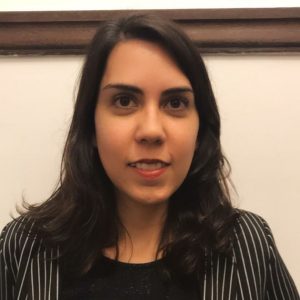
Juliana Ribeiro da Silva Bevilacqua is a specialist in African and Afro-Brazilian art. She studied at the University of São Paulo, where her PhD dissertation was on the Museu do Dundo in Angola (1936–61). From 2004–14 she worked as a researcher at the Museu Afro Brasil in São Paulo. She collaborates with different museums in Brazil researching African art and Afro-Brazilian art collections, including the Museu de Arte de São Paulo and the Museu de Arqueologia e Etnologia at the University of São Paulo. In 2015 she was a guest editor of Critical Interventions: Journal of African Art History and Visual Culture in an issue dedicated to Afro-Brazilian Art. Since 2017 she has been a professor collaborating with the graduate program in Art History at the University of Campinas (Unicamp). Recently she was a visiting professor at the Universidad de Los Andes, Bogota, Colombia, in the Connecting Art Histories program sponsored by the Getty Foundation.
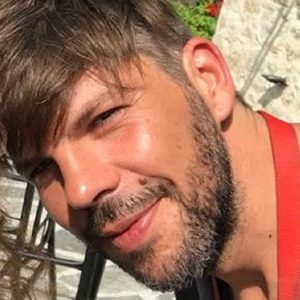
Marko Stamenkovic, born in the former Yugoslavia, is an associate curator of ZETA Contemporary Art Center in Tirana, Albania. He is an art historian and transcultural theorist with a strong interest in the decolonial politics of race, ethnicity, and sexuality. Over the past decade, he has been working primarily in the field of contemporary visual arts as a freelance curator, critic, and writer focused on the intersection of visual thinking and social theories, political philosophies, and cultural practices of the marginalized and the oppressed. He holds a PhD in philosophy from Ghent University (Belgium) where he worked on questions of sacrifice, self-sacrifice in protest, and suicide to explore the relationship between human mortality and politico-economic powers on the darker side of democracy, from a perspective of the global South. He is a member of AICA (International Association of Art Critics) and IKT (International Association of Curators of Contemporary Art).
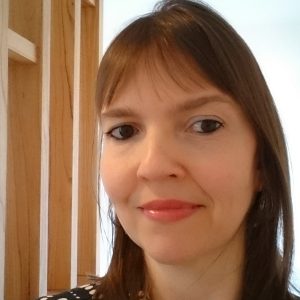
Viviana Usubiaga holds a PhD in art history from the Universidad de Buenos Aires (UBA) in Argentina. She is an associate professor of contemporary art at the Universidad Nacional de San Martín and an assistant professor of modern and contemporary art history at UBA. Usubiaga is also an adjunct researcher of the Consejo Nacional de Investigaciones Científicas y Técnicas (CONICET) and a board member of the Centro Argentino de Investigadores de Arte (CAIA). Her fields of interest include visual arts, literature, and museum studies, focusing on the political impact of transnational circulation of artistic images and texts during socially traumatic periods, including dictatorships and post-dictatorships in South America. Being a specialist in resistance art practices and institutional cultural politics, Usubiaga is the author of Imágenes inestables. Artes visuales, dictadura y democracia en Buenos Aires (2012). She also organizes independent curatorial projects in which she experiments with using scholarly methodologies in non-academic or non-specialist settings.
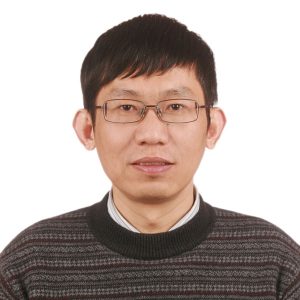
Jian Zhang was born in Hangzhou, China, and earned his PhD in art theory and history from the China Academy of Art, Hangzhou. He is a professor of art history at the School of Art and Humanities as well as the chief librarian of the Academy Library at the same university. His present research focuses on expressionism (formalism) in modern art historiography as well as the problem of its modernity. He is the author of Life of the Visual Form of Art, The History of the Western Modern Art, and An Alternative Story: Expressionism in the Western Modern Art Historiography, and also the translator of the Chinese edition of Wilhelm Worringer’s Form in Gothic, Heinrich Wolfflin’s The Sense of Form in Art: A Comparative Psychological Study (Italien und das deutsche Formgefühl) and Conrad Fiedler’s On Judging Works of Visual Art.
PARTICIPATING ALUMNI
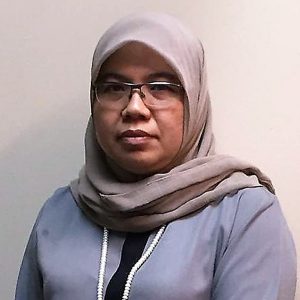
Sarena Abdullah is a senior lecturer in the School of the Arts at the Universiti Sains Malaysia in Penang, where she teaches art history to undergraduate and graduate students. She received an MA in art history from the University at Buffalo, State University of New York, and a PhD in art history from the University of Sydney in Australia. Specializing in contemporary Malaysian art with a broader interest in Southeast Asian art, Abdullah was the inaugural recipient of the London, Asia Research award given by Paul Mellon Center (London) and Asia Art Archive (Hong Kong). Her book Malaysian Art since the 1990s: Postmodern Situation was published in 2018, as was Ambitious Alignments: New Histories of Southeast Asian Art, for which she was a co-editor, published by the Power Institute and National Gallery Singapore. She first participated in the CAA-Getty International Program in 2016 and presented a paper as part of the program’s reunion during the 2017 conference.
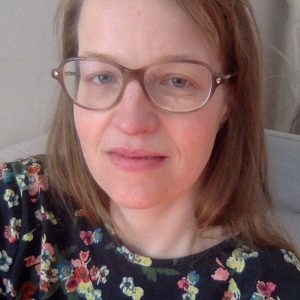
Katarzyna Cytlak is a Polish art historian based in Buenos Aires, Argentina, whose research focuses on Central European and Latin American artistic creations in the second half of the twentieth century. She studies conceptual art, radical and utopian architecture, socially engaged art, and art theory in relation to post-socialist countries from a transmodern and transnational perspective. In 2012, she received a PhD from the University Paris 1 Panthéon-Sorbonne, France. Cytlak was a postdoctoral fellow at the CONICET – National Scientific and Technical Research Council, Argentina (2015-2017). She is currently working as a researcher and professor at the Center for Slavic and Chinese Studies, University of San Martín, Argentina. Selected publications include articles in Umění/Art, Eadem Utraque Europa, Third Text, and the RIHA Journal. Cytlak is a grantee of the University Paris 4 Sorbonne (Paris), the Terra Foundation for American Art (Chicago, Paris) and the Institut National d’Histoire de l’Art (INHA, Paris). In 2018, she participated in the CAA-Getty International Program.

Nadhra Khan is a specialist in the history of art and architecture of the Punjab from the sixteenth to the early twentieth century. She received a PhD from the University College of Art & Design, University of the Punjab, Lahore, and teaches art history at Lahore University of Management Sciences, Lahore, Pakistan. Khan’s research focuses on the visual and material culture of the Punjab region during the Mughal, Sikh, and colonial periods. Her publications address several misconceptions and misrepresentations of Mughal and Sikh art and architecture as well as the state of art and craft in the Punjab under the British Raj and reflect the wide range of her interests and expertise.
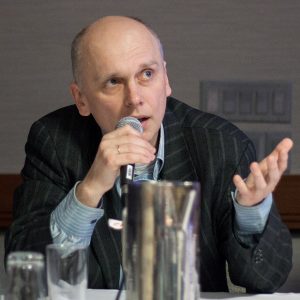
Nazar Kozak is a senior research scholar in the Department of Art Studies in the Ethnology Institute at the National Academy of Sciences of Ukraine. Previously he also taught the history of art at the Ivan Franko National University of Lviv. Kozak has received scholarships and grants from the Fulbright Scholar Program, State Scholarships Foundation of Greece, the American Council of Learned Societies, the Austrian Agency for International Mobility, and the Shevchenko Scientific Society in the United States. Kozak’s primary research is on Byzantine and post-Byzantine art in Eastern Europe. He is the author of Obraz i vlada: Kniazhi portrety u mystetstvi Kyïvskoï Rusi XI stolittia (Image and authority: Royal portraits in the art of Kyivan Rus’ of the eleventh century, Lviv, 2007). More recently, he has begun to work on contemporary activist art. His article on the art interventions during the Ukrainian Maidan revolution was published in the Spring 2017 issue of the Art Journal; it received an honorable mention as a finalist for that year’s Art Journal Award. Kozak participated in the CAA-Getty International Program in 2015 and presented a paper as part of the program’s reunion during the 2017 conference.
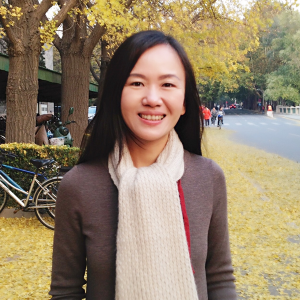
Chen Liu teaches art history and architecture at Tsinghua University in Beijing, China, where she received a bachelor’s degree in architecture with honors. After receiving a master’s in architecture and urban planning from the University of Maryland in 2000, she practiced as an architect in Washington DC until 2005. In 2011, she received a PhD in art history from Princeton University, specializing in Renaissance and Baroque art and architecture. In 2012, funded by an Andrew W. Mellow Fellowship, she helped create and direct the first Villa I Tatti summer research seminar designed specifically for Chinese scholars. “The Unity of the Arts in Renaissance Italy” provided participants with the opportunity to study firsthand the art and architecture of Renaissance Italy. Liu also teaches courses on the visual arts at Beijing Film Academy and Tongji University (Shanghai). She publishes widely on early modern art and architecture, as well as on the response of Chinese scholars to the Italian Renaissance. For the academic year 2018-2019 Liu is a Harvard-Yenching Institute Visiting Scholar at Harvard University.
Lapsed Member? Rejoin CAA in November at 25% Off
posted by CAA — Oct 31, 2018
This November is the perfect time to rejoin CAA. We know your membership has lapsed, but we want you back.
We’ve just announced the full schedule for the 2019 Annual Conference in New York, February 13-16, 2019. Registration for the Annual Conference opened in October and we are on track to have our largest conference in New York in over five years. CAA just launched the application portal for the Art History Special Exhibition Travel Fund, which awards up to $10,000 to students and faculty for museum exhibition travel in connection with their studies. In the coming week, we will also release our Guidelines for Addressing Changes to Visual Arts Programs at Colleges And Universities, a new tool created in response to the many devastating arts and humanities department closures or reductions that have occurred in recent years. Be a part of the organization that supports the arts and humanities and all professionals in the field.
There has never been a better time to rejoin CAA.
We look forward to seeing you at the 107th CAA Annual Conference in New York, February 13-16, 2019.
Annual Conference Committee Chair Charlene Villaseñor Black on Why You Can’t Miss CAA 2019
posted by CAA — Oct 23, 2018
Charlene Villaseñor Black is Professor of Art History and Chicana/o Studies at UCLA and chair of the Annual Conference Committee for the 2019 Annual Conference in New York, February 13-16, 2019.
As a crucial player in the conference process, we asked Charlene to share her thoughts on the field, being a part of CAA, and what goes into making the conference a reality every year. Listen in or read her thoughts below.
So, chairing the Conference Committee is a huge job. We had a record number of submissions—there was a lot of reading—but it was also very exciting to see where our members are, and what kinds of things people are doing in terms of their artistic practice, what things art historians are thinking of. It was actually very exhilarating to read these submissions.
When I came on, agreed to do this, I had a couple of goals in mind, and the first one for me was diversifying CAA. Really broadening out what kinds of topics we were looking at. I was also interested in pulling in more people who are working on historic time periods. I’m someone who works on colonial, on early modern but I also work in contemporary Chicanx art. So I’m very much interested in seeing how differing fields can speak to each other, and I was also very much interested in studio art, and a little nervous about that because I actually think that dialogue with artists is extremely important for those of us who are historians.
The submissions that we read were very exciting. There are many different themes, a very diverse representation of subject areas. What was interesting to me was that several themes that transcend chronology or geography came out to me. There were a lot of panels on the politics of artistic production. There were a lot of panels looking at migration, immigration, globalism. There were a lot of panels looking at the environment, artistic practice in the environment. Materiality was another very important topic that I saw that’s still very popular.
So I was very attentive to the representation of historical panels for the annual conference. This is actually very important to me, and there were a lot of early modern panels. As someone who works on early modern colonial and contemporary, I really think about why history matters. And in this current political moment, I think we understand why history matters, and why facts matter. And thinking about the current migration crises in the world right now, the roots of those crises are really in the early modern period, during this period of European imperialism. So I actually think this is a moment when we can really speak to each other across time periods, across fields. It’s a really important moment for us to do that.
I hope that the biggest surprise about the conference is its incredible breadth, and the incredible range of interests that our members have, and people are working on in their studio practices, in their scholarship.
My very first CAA was in 1992. I was a graduate student. It was in Chicago, and I very clearly remember going to that first conference. I felt intimidated. I also remember very well, I think it was 1995, San Antonio. I was on the job market, but what I remember is that there were two Latin American panels. There were two colonial panels. They were scheduled at the same time unfortunately, but I remember presenting at that conference.
CAA is the major professional organization that I belong to. I’m also active in Latinx studies, but CAA for me feels like home. I was very fortunate to win one of the CAA Millard Meiss subventions early on for my first book. CAA to me is just fundamental in terms of you go to the conference, you see what everyone’s working on, what does the field look like at this moment? You see lots of old friends. You hopefully meet some new people.
The job market is a challenge right now for young scholars who are just finishing. Because of the fields I work in, I am very fortunate that my students have done really well. They tend to have multiple job offers. I had two people on the market this year, so I’m very grateful for that. I think it’s actually really important to broaden what it is we can teach and what we can talk about. Not just be highly specialized in twenty years of the 16th century, for example. It’s extremely important to have range, to be able to even move out of art history. A number of my students are also working in ethnic studies right now, and they’ve all done beautifully on the job market.
I think it’s also up to us to argue for the importance of what we do. Visual literacy could not be more important than it is at this particular moment. This is the most visual world that has ever existed, so that visual literacy argument is important for us to make, I feel.
So we had a record number of submissions this year, and I read a lot of them. I read hundreds of the submissions, and really allotted a lot of time to doing it, because you want to make sure you give every submission a fair read and a good read. You don’t want to be grouchy or tired when you’re reading someone’s submission. It’s their work. It’s very important. So I read I’m guessing 400 or 500 of the submissions. Yeah. I really wanted to get a sense of where everybody was.
The final decisions are made by a committee, by the Annual Conference Committee, and there were so many submissions this year that we pulled in extra readers. You want to have a very diverse group of readers because our knowledge tends to be very particular. For example, you want to make sure you have people who are in studio art reading studio art proposals. Somebody who understands maybe contemporary may not understand ancient pre-Columbian. So you want to have readers who are literate in a variety of areas able to read and fairly assess the submissions.
I think it’s really important, and I’m speaking as an advisor, as a mentor, as someone who’s also an editor, that I like it when we put our main idea out first or upfront. When we’re talking in a proposal submission, I think it’s important to not kind of unroll your way to the main point. So I think being direct can really help clarify what you’re talking about.
I think to be successful presenting, it is really important that you’re not just reading, looking down, reading your script. That even if you have to rehearse moments of engagement with the audience, that will really enliven the presentation. Take time to look at the images you’re talking about, to point out things in the images. Take time to engage directly with your audience, make eye contact with them. I know when I’m working with students, it’s very important to tell people that you need to do those things, and to rehearse the paper so that you’re not stumbling—you know what you’re going to say before you say it.
I love the opportunity to connect with people that I haven’t seen since the last conference. I love seeing the latest work that’s happening in art history, and I love hearing artists talk about what they’re doing.
Charlene Villaseñor Black, whose research focuses on the art of the Ibero-American world, is Professor of Art History and Chicana/o Studies at UCLA. Winner of the 2016 Gold Shield Faculty Prize and author of the prize-winning and widely-reviewed 2006 book, Creating the Cult of St. Joseph: Art and Gender in the Spanish Empire, she is finishing her second monograph, Transforming Saints: Women, Art, and Conversion in Mexico and Spain, 1521-1800. Her edited book, Chicana/o Art: Tradition and Transformation, was released in February 2015. She is co-editor of a special edition of The Journal of Interdisciplinary History entitled Trade Networks and Materiality: Art in the Age of Global Encounters, 1492-1800, with Dr. Maite Álvarez of the J. Paul Getty Museum; and editor of a forthcoming issue of Aztlán focused on teaching Chicana/o and Latina/o art history. She has held grants from the Getty, ACLS, Fulbright, Mellon, Woodrow Wilson Foundations and the NEH. While much of her research investigates the politics of religious art and global exchange, Villaseñor Black is also actively engaged in the Chicana/o art scene. Her upbringing as a working class, Catholic Chicana/o from Arizona forged her identity as a border-crossing early modernist and inspirational teacher.
Now Accepting Applications for the Art History Special Exhibition Travel Fund
posted by CAA — Oct 16, 2018
In August, we announced that CAA received a major anonymous gift of $1 million to fund travel for art history faculty and their students to special exhibitions related to their classwork. We’re pleased to now be accepting applications for the newly created Art History Special Exhibition Travel Fund.
The fund is designed to award up to $10,000 to qualifying undergraduate and graduate art history classes to cover students’ and instructors’ costs (travel, accommodations, and admissions fees) associated with attending museum special exhibitions throughout the United States and worldwide. The purpose of the grants is to enhance students’ first-hand knowledge of original works of art.
Applications are due by January 15, 2019.
GUIDELINES
- These awards support student and instructor travel costs incurred while visiting museum special exhibitions in the United States and worldwide.
- Graduate and undergraduate art history classes are eligible to apply for funds to attend temporary museum exhibitions (not exhibitions on permanent display) in the United States and other countries. Exhibitions on any artist, period, or area of art history are eligible for funding.
- Awards are made directly to institutions whose membership in CAA is in good standing. Applicant instructors must be individual members of CAA in good standing. Funds may only be used to travel to exhibitions that correspond directly to the content of the class. Ideally, classes will be no larger than fifteen students and planned to benefit from the special exhibition (for instance, a seminar on the subject of the exhibition).
- Awards may only be used for admission fees, travel and lodging expenses for the instructor and class members. Every attempt to attain group rates must be made.
Completed applications must include the following:
- An application form
- Instructor’s curriculum vitae
- A course description and syllabus that identifies and explains the exhibition as part of the pedagogical aim of the course
- An explanation of the instructor’s expertise in the subject matter of the exhibition
- A tentative itinerary of travel and lodging
- A budget detailing transportation and lodging expenses associated with traveling to and from the exhibition and lodging and admission costs, including an explanation of how any travel and accommodation funds in excess of the award will be raised
- A letter of support from the instructor’s department chair or dean
AWARDS
Awards will not exceed $10,000 per class, per exhibition.
ANNUAL CONFERENCE
Recipients of the award will be guaranteed a session at the subsequent CAA Annual Conference after their travel has ended. CAA will make the session available, but costs associated with attending the conference, including registration, membership, travel, and accommodation, will be the participants’ responsibility.
TIMELINE
The deadline for application materials is January 15, 2019.
Registration Now Open for the 2019 CAA Annual Conference
posted by CAA — Oct 02, 2018
2019 CAA Annual Conference
New York Hilton Midtown
February 13-16, 2019
Four days for everyone in the arts with over 300 sessions and panels, dozens of receptions and parties, professional development workshops, lightning talks, and exhibitors. #CAA2019 #CAANYC
The CAA Annual Conference returns to New York in 2019. From February 13-16, at the New York Hilton Midtown, we welcome all those in the visual arts to attend over 300 sessions and professional development workshops, and dozens of receptions, parties, and special tours at local museums and cultural institutions. The Book and Trade Fair and the Cultural and Academic Network Hall, with hundreds of booths showcasing the latest products, programs, and books, will occupy three floors of the Hilton New York Midtown. Our partners offering free admission and special tours this year include The Frick Collection, The Morgan Library & Museum, The Jewish Museum, Dia Art Foundation, the Rubin Museum of Art, the New York Public Library, the Neue Galerie, and many others.
The 107th CAA Annual Conference content will address the full breadth of the field of visual arts and design and examine a range of cultures, histories, and scholarship. We anticipate more than 5,000 professionals in the arts to attend the conference in New York. Sessions will include “Below the Mason-Dixon Line: Artists and Historians Considering the South,” “Deskilling in the Age of Donald Trump,” “Immigration and Inclusion in Art Museums,” “Supporting Immigrant Artists and Communities,” “Mapping Crime,” “Endangered Data,” and “Racist Human Mascots: A Guide for Artists and Designers to Determine the Qualifications of Racism in Commercialized Art,” among hundreds of other panels.
The Distinguished Scholar for the 107th CAA Annual Conference is Dr. Elizabeth Boone, the Martha and Donald Robertson Chair in Latin American Studies at Tulane University. Dr. Boone specializes in Pre-Columbian and early colonial art of Latin America.
New this year, the CAA Annual Conference will feature twenty professional development workshops supported by The Emily Hall Tremaine Foundation. The workshops add to CAA’s annual workshop offerings for a total of thirty available workshops at the Annual Conference. The Emily Hall Tremaine Foundation workshops will be led solely by MFA candidates and adjunct faculty with the aim of strengthening practical, hands-on skills for studio artists as well as providing professional development opportunities.
Once again, CAA will offer a number of travel grants and scholarships to individuals looking to attend the Annual Conference. With the generous support of Blick Art Materials and Routledge, Taylor & Francis, CAA will provide eight student member registrants with $250 each to attend the conference.
We look forward to seeing you in NYC!
Please contact Member Services at membership@collegeart.org or at 212-691-1051, ext. 1 with any questions.
Affiliated Society News for September 2018
posted by CAA — Sep 11, 2018
Affiliated Society News shares the new and exciting things CAA’s affiliated organizations are working on including activities, awards, publications, conferences, and exhibitions.
We’re seeking new organizations to join CAA’s Affiliated Societies. Click here to learn more.
Mid-America College Art Association (MACAA)
Upcoming MACAA Conference: Oct 4—6, 2018: Techne Expanding New / Tensions New / Terrains New / Tools @ The University of Nebraska-Lincoln
The 2018 MACAA Conference will explore wide-ranging interpretations of technology and its use and impact on the teaching, making, and performing art as well as the broader human experience. Recognizing that technology has art and craft at its root (techne) and isn’t limited just to bigger, better, or faster tools and products, we will examine how we embrace or resist technology, how we celebrate or critique it, and consider its promise as well as its limits.
Reserve your room for the conference at the Embassy Suites by Hilton Lincoln. Tickets for the conference can be purchased through Eventbrite. Inquiries about the conference can be sent to Sandra Williams, Associate Professor and Conference Chair, swilliams2@unl.edu.
Get your MACAA membership registration here.
Upcoming MACAA Members’ Exhibition will be held at the Eisentrager-Howard Gallery at the University of Nebraska-Lincoln, October 3-19, 2018.
Upcoming for CAA 2019: MACAA’s CAA Affiliate Session
“Respond and Adapt: A Fuse of Art and the Other”
Co-chairs: Julie Marcelle Abijanac, Columbus College of Art & Design; Chung-Fan Chang, Stockton University
Wed, February 13, 2:00—3:30 PM, Room: Concourse G
A2RU
a2ru Circuits Webinar: Navigating Your Educational Path Toward an Interdisciplinary Career
Thursday, October 4, 2018
2:00-3:00pm ET
Register HERE
What might be needed to create an interdisciplinary career guide or toolkit for students who are looking toward a modern work life? This webinar will include alum from the a2ru Emerging Creatives Student Summits discussing both their interdisciplinary paths and experiences and what they would like to have known or had in support of their educational goals as an undergraduate student.
a2ru Annual National Conference: Arts Environments: Design, Resilience, and Sustainability
November 1-3, 2018
Hosted by University of Georgia (Athens, GA)
Registration now open!
The 2018 theme, Arts Environments: Design, Resilience, and Sustainability, is an invitation to explore the relationship between creativity and diverse cultural locations, by framing discussions about design, resilience, and sustainability in the context of interdisciplinary artistic and environmental practice. The theme offers an opportunity to think broadly about the ecology of the arts and their environments, in terms of performance, design, and engineering. A land and sea grant institution inextricable from the town of Athens and the broader ecologies of Georgia and the Southeast, the University of Georgia will provide a rich context for thinking creatively about Arts Environments globally. The 2018 conference will also include exhibits, installations, performances, and events throughout.
Historians of Islamic Art Association
The Historians of Islamic Art Association is delighted to annoucene that it’s sixth biennial symposium, “Border Crossing,” will be held at Yale University from October 25-27, 2018. Professor Zainab Bahrani will deliver the keynote lecture,“Ascent of Images: Mapping Time at the Amadiya Akropolis.” The symposium will bring together an international group of established and emerging scholars of Islamic art and architecture to present new research on the theme of “Border Crossing.” Very often the field has been defined as one centered on select regions of the Middle East, South Asia, and Central Asia, and focusing on traditional media and categories, such as the decorative arts, manuscript studies, and architecture. Less attention has been paid to regions on the so-called peripheries, including, for example, Southeast Asia and sub-Saharan Africa, or to disciplines that are not often associated with the field, such as film and anthropology.
“Border Crossing” will rethink the field of Islamic art and architecture by interrogating the ideas of translation, transmission, and transgression. Among the questions that will be asked are: How can this lens help us rethink works that form the “canon” of Islamic art? What is at stake in crossing disciplinary borders? What is lost and what is gained in abandoning traditional academic parameters? What may be learned through literal border crossings, whether they are by conservation authorities or refugees? As the works of several contemporary artists show, border crossings are ultimately ethical positions taken to evince the human condition itself. They thus provide potential to rethink the arts and cultures of the Islamic world, as well as the ways in which we study them today.
For more information, and to register, visit: hiaa2018.yale.edu
Association for Textual Scholarship of Art History (ATSAH)
William R. Levin (Centre College, emeritus) authored “The Bigallo Triptych: A Document of Confraternal Charity in Fourteenth-Century Florence” in Confraternitas, vol. 29, no. 1 (Spring 2018), pp. 55-101, with eight reproductions. The article considers the style, form, content, commission, and purpose of a long-recognized masterpiece of early Italian painting within the theological climate of its time, and is also available online at https://jps.library.utoronto.ca/index.php/confrat/article/view/29895. The journal is published by the Centre for Reformation and Renaissance Studies on behalf of the Society for Confraternity Studies, both headquartered at the University of Toronto.
Liana De Girolami Cheney (UMASS Lowell emerita), Visiting Researcher in Art History at SIELAE, Universidad de Coruña, Spain and Universittà di Aldo Moro, Bari, Italy
“Lavinia Fontana’s Cleopatra the Alchemist,” Journal of Literature and Art Studies (August 2018), Vol. 8. No. 8, pp. 1-22.
AICA-USA
AICA-USA is excited to participate in a members-only viewing of Shimon Attie’s public installation Night Watch. More Art, in collaboration with organizational partner, Immigration Equality, will host a VIP cocktail reception for AICA-USA members on the evening of Monday, September 24. This exclusive reception will include a walk as a group to the waterfront to view the work as well as the opportunity to meet with the artist, project participants, and More Art organizers. AICA-USA thanks More Art, Immigration Equality, and Shimon Attie for this special opportunity.
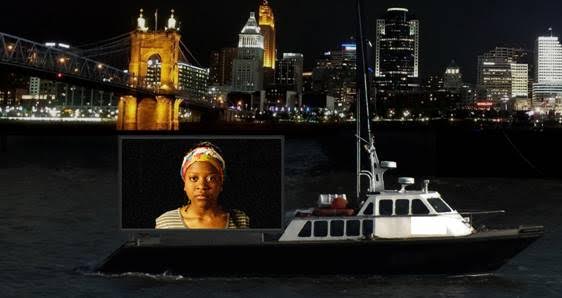
SECAC
The 74th Annual SECAC Conference, hosted by the University of Alabama at Birmingham, will be held October 17 through 20, 2018. More than 450 papers—on studio art, art history, art education, and graphic design—will be presented in 120 sessions. Offsite events include a keynote address by Andrew Freear of Auburn University’s Rural Studio and a reception to view the exhibition Third Space/Shifting Conversations about Contemporary Art at the Birmingham Museum of Art. The annual SECAC Artist’s Fellowship and Juried Exhibitions’ reception at will be held at UAB’s Abroms-Engel Institute for the Visual Arts. More information and conference registration are available at https://www.secacart.org.
Society of Historians of Eastern European, Eurasian, and Russian Art and Architecture (SHERA)
Society of Historians of Eastern European, Eurasian, and Russian Art and Architecture (SHERA) is pleased to announce the SHERA-sponsored session Looking East: Russian Orientalism in a Global Context, chaired by Dr. Maria Taroutina (Yale-NUS College) and Dr. Allison Leigh (University of Louisiana at Lafayette) at the College Art Association 2019 Annual Conference in New York City, New York Hilton Midtown, February 13-16, 2019. SHERA Business Meeting at the CAA Conference will take place on February 15, Madison Suite 12:30 to 1:30 pm, New York Hilton Midtown.
SHERA Business Meeting at the ASEEES 50th Annual Convention, 6-9 December, Boston, MA 2018, is scheduled on December 7, 8:00 to 9:30pm, 3 Brandeis, Boston Marriott Copley Place. The SHERA Travel Grant to the ASEEES Convention, in the amount of $ 1,500 made possible by a generous anonymous donation, has been awarded to Denis Stolyarov, a PhD student at The Courtauld Institute of Art, London UK, presenting his paper “Contested Spaces: Radical Potential in the Post-Soviet Art Gallery.”
Midwest Art History Society
The Midwest Art History Society (MAHS) Fall Board Meeting will take place October 12 and 13, 2018 in Chicago. Plans are well underway for the 2019 annual conference which will be held in Cincinnati. Look for the conference call for papers to be distributed in the member’s newsletter appearing soon. In the meantime, you can check for updates, find membership information, and locate documentation of previous conferences at our website www.mahsonline.org.
At MAHS’s recent conference in Indianapolis (April 5-7, 2018) Lauren DeLand, Assistant Professor Art History, Indiana University Northwest, received the MAHS Emerging Scholar Distinguished Presentation Award for her paper “A Fig Leaf for Jeff Koons: Pornography, Privacy, and Made in Heaven.” The award is granted to an outstanding paper presented at the MAHS annual conference by an art historian who received his or her PhD within the last five years.
Pacific Arts Association (PAA)
Pacific Arts Association XIII International Symposium, RESILIENCE: sustaining, re-activating and connecting culutre. March 25-28, 2019, Brisbane, Australia. Call for Full Sessions and Curated Panels, Demonstrations, Activations, Performances and Workshops. Hosted by Queensland Museum, State Library of Queensland, Queensland Art Gallery, Gallery of Modern ARt and Queensland Performing Arts Centre. For more information see: www.pacificarts.org
Curatorial Research Fellowship at MARKK, Museum am Rothenbaum World Cultures and Arts. Applications due September 30th 2018 – Fellowship should start in January 2019. The application materials should be written in English and sent in a single pdf file. They should include a research proposal specifying the thematic focus (max. 3000 words), a bibliography, a curriculum vitae, 3 references, and a cover letter explaining the motivation for the application. Please address inquiries to Johanna Wild Museum am Rothenbaum
Phone: +49 (40) 428 879 -635
Email: johanna.wild@markk-hamburg.de
A new Scholarship in Oceanic Studies has been launched. The Anthony JP Meyer Fellowship is intended for students and non-statutory researchers, with proven competence in the processing and analysis of non-Western art or with significant experience in the fields of history, art, ethnography or archeology. The successful applicant will undertake a study in the collections of the Quai Branly Museum or in anoth French museum on objects of art and ethnography of Oceania. Further information: http://www.meyeroceanic.art/
Association of Art Museum Curators Foundation
The AAMC Foundation Engagement Program for International Curators, made possible by major support from the Terra Foundation for American Art, will open its application portal on Tuesday, September 11. Through fostering international relationships between curators, AAMC aims to not only provide opportunities for professional development and exchange, but also expand and strengthen the international curatorial community and amplify the curatorial voice in the global dialogue between museum professionals.
The 12-month Program provides a framework for two curator pairings to interact regularly, reflecting on and developing their self-identified areas of advancement with each other. The Program includes travel funding for International Awardees, a participant stipend for US Liaisons, networking, and more, which are outlined in greater detail in the Program Components area of the application.
At the core of this Program is a year-long partnership between a non-US based curator (International Awardee) and a US-based curator (US Liaison) dedicated to professional development and exchange in areas including but not limited to research, project management, leadership development, cross-border exhibitions, loans, fundraising, marketing, dealer and donor relationships.
All applicants must be art curators working on or having worked within exhibitions and projects that explore historic American Art (c. 1500-1980), including painting; sculpture; works on paper, including prints, drawing and photography; decorative arts; and excluding architecture; design; and performance. Additional requirements include a minimum of 50% of the time for/with non-profit organizations will be considered. Please note that curators working in four-wall collecting and non-collecting, community based, and non-four wall organizations, at any location in the globe are eligible.
Visit the Program page to learn more about the Program’s components: https://www.artcurators.org/page/GrantsTerra
The online application for International Awardees and US Liaisons opens on Tuesday, September 11, 2018, and are due by Monday, November 5, 2018 at 12pm ET.
Association of Print Scholars
The Association of Print Scholars is pleased to announce the scholars and papers selected for inclusion in its affiliated society panel at the College Art Association conference taking place February 13-16, 2019 in New York.
Chaired by Christina Michelon (University of Minnesota, Twin Cities), the APS panel Coloring Print: Reproducing Race Through Material, Process, and Language investigates the racialized dimensions of print and printmaking. The medium has played a central role in the ideological founding of “race” and its hierarchies through visual representation. However, print’s materials, processes, and the language we use to describe them interface with conceptions of race in ways that require further study. For example, the term “stereotype” originated in the printing trade but has since evolved to mean an oversimplified general idea, often with pejorative racial connotations; the invention of chromolithography in the nineteenth century offered a more nuanced way of representing skin tones but simultaneously enabled the increased circulation of racist imagery; the rabid appreciation and collection of Japanese prints in the West altered artistic production globally while idealizing Eastern cultures; anthropological sketches and watercolor studies of native peoples were routinely translated to print, widely reproduced, and used as tools of imperialism and colonialism.
Coloring Print examines global printmaking traditions that advance our understanding of the role of the medium in the social construction of race. The papers chosen include “Red Ink: Ethnographic Prints and the Colonization of Dakota Homelands” by Annika Johnson (University of Pittsburgh); “Sites of Contest and Commemoration: The Printed Life of Richard Allen, America’s Early Race Leader” by Melanee C. Harvey (Howard University); “A Franco-Indian Album: Firmin Didot’s Indian Paintings and Le Costume Historique’s Chromolithography (1888)” by Holly Shaffer (Brown University); and “The White Native Body in Asia: Woodcut Engraving and the Creation of Ainu Stereotypes” by Christina M. Spiker (St. Catherine University).
Save the date: APS will be holding a members’ meeting and reception at C.G. Boerner Gallery, 526 West 26th Street, Rm 304, New York, on Friday, October 26, 2018 from 5:30-7 PM, with a tour of their new exhibition featuring the work of the early 20th century French printmaker J.E. Laboureur. Please feel free to join us if you are a current member of APS, or are interested in learning more about the organization!
Visual Resources Association (VRA)
The Visual Resources Association is a multidisciplinary organization dedicated to furthering research and education in the field of image management within the educational, cultural heritage, and commercial environments that has been affiliated with CAA for many years (http://vraweb.org/).
The next VRA international conference for image media professionals will take place at the Doubletree Hotel in the Little Tokyo area of downtown Los Angeles on March 26-29, 2019. We welcome CAA members as well as any intensive image users and like-minded information professionals to join in on what will be an exciting schedule of workshops, sessions, meetings, tours, and social events in Southern California.
At the LA conference, the organization’s highest awards will be conferred and a call for nominations for both the Distinguished Service Award and the Nancy DeLaurier Award–is now open with a deadline of November 2, 2018. The Distinguished Service Award honors an individual who has made an outstanding career contribution to the field of visual resources and image management. The Nancy DeLaurier Award, named for one of the pioneers of the visual resources profession, honors either a single individual or a group of visual resources professionals for distinguished achievement in the field. “Achievement” is measured by immediate impact, and may take the form of published work, oral presentation, project management, software development, technology application, web site creation, or other outstanding effort or project. Although nominations for the awards are initiated by Visual Resources Association members, the nominees need not be members of the Association. (http://vraweb.org/call-for-2019-nominations-distinguished-service-award-nancy-delaurier-award/)
For more information about the important work and professional development activities sponsored by the Visual Resources Association or the VRA Foundation, please contact Maureen Burns, VRA’s CAA Affiliate Representative at moaburns@gmail.com or 310-489-3792.
Design Incubation
Portfolio Success: Strategies for Professional Development
Saturday, September 22, 2018.
2pm–5pm.
Type Directors Club
347 W 36th St., #603,
New York, NY 10018
Join industry professionals and design educators for a panel discussion on creating effective design portfolios. We will explore the role portfolios play in a successful design career now and in the future and will ask, are traditional portfolios still relevant? If so, what does a successful portfolio look like and what kind of projects should be included? Panelist will discuss what clients and employers want to see and which abilities industry leaders consider most important? You are invited to join the discussion as we look at new ways of teaching and explore emerging trends in effective portfolio development.
PANELISTS
Christina Black
Vice President, Creative Director
Showtime Networks Inc.
Michael McCaughley
Lead Designer at OCD
Holly Tienken
Assistant Professor
Communication Design
Kutztown University of Pennsylvania
Peter Lusch
Assistant Professor
Dept of Art, Architecture & Design
Lehigh University
Event details: https://designincubation.com/design-events/portfolio-success-strategies-for-professional-development/
Event Registration: https://www.eventbrite.com/e/portfolio-success-strategies-for-professional-development-tickets-48564564921
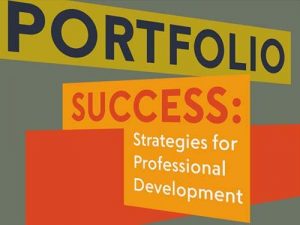
Society of Architectural Historians (SAH)
The Society of Architectural Historians has announced the recipients of the 2018 SAH/Mellon Author Awards. These awards are granted to scholars publishing their first monograph on the history of the built environment and help defray the expenses of image licensing, reproduction, and creation of original drawings and maps. SAH awarded a total of $17,498 to the following forthcoming book projects: Irit Katz, The Common Camp: Instruments of Power and Resistance on the Edge of Architecture (University of Minnesota Press), Conrad Kickert, Dream City: Creation, Destruction and Reinvention in Downtown Detroit (The MIT Press), Mariana Mogilevich, The Invention of Public Space: Design and Politics in Lindsay’s New York (University of Minnesota Press), and Ünver Rüstem, Ottoman Baroque: The Architectural Refashioning of Eighteenth-Century Istanbul (Princeton University Press).
SAH is accepting applications for the H. Allen Brooks Travelling Fellowship, which allows a recent graduate or emerging scholar to study by travel for one year. The fellowship is designed to provide an opportunity for a recent graduate with an advanced degree or an emerging scholar to see and experience architecture and landscapes firsthand, think about their profession deeply, and acquire knowledge useful for their future work. The application deadline is September 30, 2018.
SAH has announced the recipients of the 2018 SAH Awards for Architectural Excellence. Established in 2010, these awards recognize individuals for outstanding achievements in architectural practice and academic study. The 2018 winners include architects Cynthia Weese, FAIA, Robert A.M. Stern, FAIA, Harry Hunderman, FAIA, and Deborah Slaton. The recipients will be recognized at the 9th annual SAH Awards Gala on Friday, November 2, 2018, at The Arts Club of Chicago. Tickets are on sale now.
Community College Professors of Art and Art History
The Community College Professors of Art and Art History is looking for submissions for our panel at the upcoming FATE (Foundations in Art Theory and Education) Conference in April 2019. Our session, Professional Practice/Professional Foundations will be accepting submissions until September 25 on the Fate website (we are session number 42). We look forward to seeing everyone at our session and business meeting at the CAA Conference in February 2019 in New York. Need more information? Questions? Contact: Susan Altman saltman@middlesexcc.edu
Foundations in Art: Theory and Education (FATE)
Deadline: September 25: Submit your paper proposals for panels and workshops! FATE’s 17th Biennial Conference, “Foundations in Flux,” will be hosted by Columbus College of Art & Design in Columbus, Ohio on April 4th-6th, 2019. http://www.foundations-art.org/conferences
Submissions: https://www.foundations-art.org/conference-registration
Join us September 14-15, 2018, for a Regional FATE Conference at the University of Central Florida in Orlando, Florida for a symposium to share your new and developing pedagogical approaches, curriculum, and projects. This will provide the unique opportunity to hear fellow art colleagues share their experiments, successes, and failures and how they will continue to change in the future. https://www.foundations-art.org/regional-events
September 22: FATE Regional Forum: FREE: Creating the right foundations program sometimes feels like a moving target based on changing technology and theory in upper level programs. Stevenson University will host this regional forum and it will include a presentation and discussion by Catherine Behrent on the recent overhaul of MICA’s foundation program. Lori Rubeling, from Stevenson, will be discussing strategies for introducing practice-led research in foundations. To attend, please RSVP by Monday, September 10th. Please contact Lori Rubeling, LRubeling@stevenson.edu or Heidi Neff, hneff@harford.edu to RSVP.
Hunter O’Hanian in Conversation with Eric Segal, Director of Education and Curator of Academic Programs at the Harn Museum
posted by CAA — Sep 04, 2018
CAA’s executive director, Hunter O’Hanian, recently visited the Harn Museum of Art in Gainesville, Florida to speak with Eric Segal, the museum’s director of education and curator of academic programs, about the role of academic art museums and Resources for Academic Art Museum Professionals (RAAMP).
A project of CAA supported by the Andrew W. Mellon Foundation, RAAMP aims to strengthen the educational mission of academic museums and their parent organizations by providing a publicly accessible repository of resources, online forums, and relevant news and information.
Watch and read the interview below.
Hunter O’Hanian: Hello everybody. My name’s Hunter O’Hanian and I’m the director of the College Art Association. I’m very pleased today to be with Eric Segal, who is the director of education and curator of academic programs here at the Harn Museum in Gainesville, Florida. Hello, Eric. How are you?
Eric Segal: Hunter, I’m doing well. It’s great to have you here in Gainesville.
HO: Well, it’s absolutely beautiful. It’s been great to be spending time here and to go through the museum. Before we start, tell us a little bit about your background. I know you’ve been a CAA member since you were in graduate school, but tell us a little bit about your professional background.
ES: Sure. CAA since 1993.
HO: Yay.
ES: I actually started my college career as a computer engineering major. So, it was a big change when my sister made me take an art history class and that led me into art history, and I studied American art subsequently at UCLA, Masters.
HO: And, I think you won a Terra award, too.
ES: I was really fortunate to have a Terra award in 1999.
HO: Great.
ES: And that was very exciting for me and helped me in my studies. Following the completion of my doctoral dissertation, I took an assistant professor position here at University of Florida. So, I was in the art history department teaching undergraduate and graduate courses in American art, African American art, illustration and even occasionally about museum theory. Later, in 2010, a position opened up in the museum where I was able to take on museum practice a bit more. That position was the academic programs position, which had just been created as the museum realized it was important to draw closer to the university. At that time, before the position opened up, there were perhaps a few dozen courses using the museum, because there was no one doing the outreach to work with faculty across campus.
Since that time, about 10 years, we’ve maybe increased that tenfold. The number of courses, the number of faculty, the number of disciplines and students using the museum—we’ve been really delighted to expand that quite a bit.
HO: That’s great. So, [the] University of Florida here in Gainesville, about 50,000 students here on campus.
ES: Yes.
HO: You have an art history department here. And do you have a studio arts department as well?
ES: It’s a combined school of art and art history and they’re both very robust. There’s a faculty of about seven in art history and the tens, twenties in art and they’re all great colleagues. In fact, in 2019 we will have the studio art faculty show here at the museum, which comes [around] every five years.
HO: Wonderful. So, the Harn Museum has been around since 1990. Roughly, how big is it? How many square feet is the facility?
ES: The museum is about 26,000 square feet.
HO: That’s big for an academic art museum.
ES: It is. We have all of our storage onsite. We have great galleries devoted to five collecting areas. We collect in African [art], in Asian [art], in photography, in modern and contemporary art. And we have a curator in each area. So, we’re very lucky. Many academic museums don’t have such a robust curatorial staff. And we also have classrooms where we can do teaching, where we can bring objects out from storage in order to connect with academic classes on campus if we have a theme we want to try to address, say, “urban imagery.” It may be better just with works that are in storage, rather than those that happen to be on view at a given time.
HO: And 11,000 objects in the collection?
ES: That’s right.
HO: Wow. And so how do you go about procuring objects for the collection?
ES: Right. So our curators are very active along with our development officer and our director in building relationships. So, we do have an endowment for acquisitions, but many of our acquisitions do come through gifts from donors, and that would be in all areas.
HO: I noticed too in going through the museum with you that you also have a fair number of Florida artists in your collection. Can you speak about some of them?
ES: We have Florida artists from the 19th century through the present. Some of them are former faculty at UF with international and national reputations, and some include folk artists who work locally and are widely collected and whose work reveals unexpected and inspiring perspectives on our own community. So, we have both highly-trained professional artists and amateur or untrained artists.
HO: It seems to me also that you’ve done a lot of work in your role as far as inviting members of the local Gainesville community, people who are not part of the academic campus on or into the museum through different programs. Can you talk generally about how you’ve been programming in trying to bring the local Gainesville community into the museum?
ES: Sure. So, as curator of academic programs, I obviously personally focus a lot on the academic community, but I’m also director of education as you mentioned, and I have a staff with whom I work to engage the community. I also consider that my responsibility as well. We have public programs that I think of as creating layers of access. There’s programs that are traditional museum programs of lectures and educational docent tours, which have immediate appeal to people who are familiar with museums and have a museum-going experience and know they might want to learn something about an exhibition, but we also have our whole range of activities that invite the community in perhaps for a first time. We’re creating museum goers out of our local citizenry.
So, those might be experiences that sound more fun and social, but include informal learning opportunities. We have a museum nights event once a month which is open in the evenings. So, lots of programs such as that, but we also think it’s really important to reach audiences that aren’t even looking at the museum as a possible venue for leisure or art experiences and we find it’s really effective to work with the local public schools. All children go to schools and we’re able to work with them to provide transportation and rich tour experiences and programs that engage children and parents as well. Creating the opportunity to connect with families that might not be thinking of the museum, but may learn from the children that it’s a really welcoming, relevant, and meaningful space.
HO: Overall for the whole museum, how big is the staff here?
ES: The staff, including security and frontline staff, is about fifty.
HO: Wow. Great.
ES: So, it’s pretty robust.
HO: And for academic programs and education, how big is that?
ES: In education, we have six full-time staff and a number of part-time staff who support programs and activities. So, we’re also very lucky. There are smaller museums that are working on a narrower range of staff resources.
HO: What challenges do you see for the education programs here at the Harn Museum going forward?
ES: Well, you did ask about our connecting with community audiences and our challenge is to continue to grow that and be relevant and to let audiences know that we are welcoming. We want to reach audiences that have not seen themselves in museums. So, diversity in our audiences is something we’ve done a lot to improve with by partnering with local groups, with activists, with people in different communities. We’ve done a lot to improve our diversity of audiences, but we’re still expanding there. In staff, that’s another area where we really need to work hard and we have focused part of our strategic plan extension into 2019 to focus on developing new ways to build diverse staff members across the museum, including in senior staff, which as we know in museums in the United States is a real problem.
HO: If you were speaking to someone else in your position, maybe in a more rural location or a smaller facility, and they wanted to engage the community more, what advice would you give them?
ES: That’s a great question. I think that it’s really important to let audiences know that they’re welcome and to my mind, the best way to get that message out there is by being out in the community, attending community fora on relevant topics, being part of discussions of education and educational resources, being part of discussions on how universities are trying to engage—the local university or college may be trying to engage the community, both on campus and in the community. Being a face in the community makes you somewhat approachable and starts to build the relationship that’s hard to build with an advertisement in the paper that says, “Everyone’s welcome. Admission is free”. Hopefully.
So, that would be one of the first steps that I think I would try in that position is to really be part of the community and to make contact with community leaders who already have authentic connections to different members of different areas of the community.
HO: We’re going to be recording some video practicum about different areas in the museum and we’ll get into some more of those details later, but it also seems as if you’ve developed good relationships with different departments within the college itself. Can you speak a little bit about doing that and how you go about being successful there?
ES: Some of our failures in doing that have been—not that I wouldn’t continue to do it—you know, I go and give a talk to the faculty senate and I send a letter to all faculty and I get a lot of emails back, if I’m lucky, that say, you know, I saw your email but I didn’t read it last year because you sent it to everyone. So, the hard work is making individual contacts either by email but also being out there again on campus. I try to serve on committees, be it in the international center or on undergraduate curriculum, wherever it might be useful, seeing that the museum could be a resource that can be built into emerging programs and projects. So, being at the table is important. And then building the individual connections to faculty. One faculty member in a language and literature department can be your ambassador to other faculty members.
HO: And, of course you’re familiar with RAAMP resources for academic art museum professionals, and the Harn has been one of the original stakeholders, and this has been a great project that CAA has worked on with the Mellon Foundation.
ES: Yes.
HO: We’ve been very happy with the success. As a resource out there, how have you been able to use RAAMP and also were there any changes you’d like to see to it or more things you’d like to see us add to it?
ES: Yes. RAAMP is a great resource. It’s been wonderful to see it grow and the website has, for anyone who hasn’t visited it recently, really been improved in the last year, making it searchable in a way that it wasn’t before. So, it’s a resource where you can actually find the materials that are there pretty easily now and that makes it especially useful. So, for me, it’s been great as a source of inspiration when I come up against a problem such as “How do I…?” I haven’t found this one yet, but one of my problems is how do I connect with low temperature physics? I’ve never solved that problem, but when someone posts that to RAMP, that’s where I’m going find it.
HO: Great. So, for any of you out there who have an answer to that quick question as to how to deal with low temperature physics, please post it on RAAMP now.
ES: That’s right. But, it’s really a great source of inspiration [for] problem solving and models that exist out there. It’s also I think increasingly going to continue to serve the role of [a] point for conversations, which is something that I’m really looking forward to, because sometimes someone hasn’t posted on low temperature physics, but they may have already done it. And so it’s a chance to get feedback and ideas. I’m also really looking forward to in the future ideas about building diversity, as we discussed earlier. How it’s being pursued at other museums, both in terms of audiences but also in terms of staff. I think as a community academic program officers in museums need to come together to build the pipeline of museum professionals. That includes recruiting students when they’re young. I’ve been working with high school students in the past week to just tell them that museums are a career and that’s important.
It includes supporting internships. I think that discussion can happen in RAAMP about how we can sort of strategically create a pool that we’re all going draw on to diversify our staff. I’m also looking forward to learning from RAAMP more about ideas for academic programs working with development offices.
HO: Interesting. The fundraising piece.
ES: Yes. The fundraising piece. We’re all challenged in our budgets. In the past year, we’ve developed a program on early learning that we built with the college of education, and we built a really robust project, and someone said: “You need to do a video for this.” And that video has been helpful for us in developing private funds to continue to pursue this program that provides education for headstart students.
HO: Which is great, because it gives potential funders the opportunity to see what the programs are really about and be able to see that.
ES: It is. And that’s the kind of thing I’d love to share on RAAMP and also learn from others their strategies for taking our programs and having them be tools for building our funding.
HO: Yes. I’ve been recently reviewing the session proposals for the upcoming CAA conference in New York in February of 2019 and there are a lot of sessions that are coming up for professionals in academic art museums, because I do think it’s a growing field that a lot of PhD students or PhD holders and Masters will be going into it in the future. So, there will be a lot at this year’s conference in February.
ES: That’s really great to hear. And I hope that non-museum professionals, hope that artists and art historians will attend those as well, because their voices are really useful to be part of those conversations that art museum professionals are having. I was thinking about the sort of professionalization that another area of RAAMP is going help us connect on is going to be evaluation. Museums are always challenged in terms of evaluation. We know it’s important to prove that what we do is effective. Evaluation is time-consuming or expensive or both, and sharing expertise and ideas in that area I think is going to be something that’s going to really help us to build our case in the future.
HO: Yes, I mean, ultimately all museums are educational institutions, and we have to be able to quantify how that happened.
ES: I think that is the case.
HO: Eric, thank you so much for your time here. It’s been great to tour the museum and I really have appreciated it. And so good luck with all your work going forward.
ES: Thank you, Hunter, for sharing your interest of the museum with our RAAMP audiences.
Finding Support: Personal Narratives From the Art World
posted by CAA — Aug 27, 2018
Thursday, September 27, 2018
6 PM – 8:30 PM
Kickstarter, 58 Kent St, Brooklyn, NY 11221
RSVP HERE
In the age of the gig economy, free exposure, and unpaid internships, finding a path to success and stability in the arts is increasingly unreliable. In this conversation, listen to artists, curators, arts workers and scholars discuss their own personal narratives on how, and where, they found support and resources. Panelists will discuss grants, fundraising, the importance of a digital presence for both academics and artists, and recent artist and art world salary surveys.
Panelists include:
- Andisheh Avini, Multimedia Artist
- Connie Choi, Associate Curator, Permanent Collection, Studio Museum in Harlem
- Patton Hindle, Director of Arts, Kickstarter
- Harper Montgomery, Assistant Professor, Hunter College
The conversation will be moderated by Hunter O’Hanian, executive director of CAA. Seating is first come, first served. It will be hosted by Kickstarter and CAA at Kickstarter HQ, and refreshments will follow. The building is wheelchair accessible. Registration is required for entry – click here to RSVP.
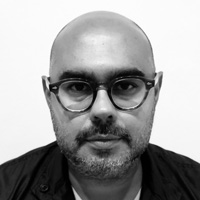
Brooklyn-based artist Andisheh Avini’s (b. 1974) practice includes painting, drawing, and sculpture, and often incorporates the traditional craft of marquetry. Avini explores the duality of his own identity by combining Iranian icons and motifs, from the decorative to the political, with Occidental traditions of minimalism and abstraction. In juxtaposing the sacred geometries of Islamic crafts with the irregularities and chaotic forms of nature, Avini reveals the distances between heritage, expectation, and the rhythms of everyday life. Avini’s approach speaks to a disparate, globalized society of nomads, and reflects a contemporary multicultural experience, marked by both collective and individual memory.
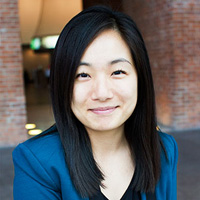
Connie H. Choi is the Associate Curator, Permanent Collection at The Studio Museum in Harlem, where she has worked on the exhibitions Fictions, Regarding the Figure, and Their Own Harlems. She is currently organizing a major traveling exhibition drawn from the museum’s permanent collection. Prior to joining the museum in February 2017, Choi was the assistant curator of American art at the Brooklyn Museum. Choi is a Ph.D. candidate in art history at Columbia University. She received a B.A. in the history of art from Yale University and an Ed.M. from Harvard University.
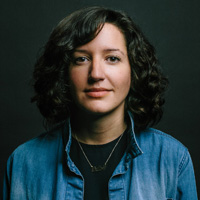
Patton Hindle is the Director of Arts at Kickstarter where she oversees the Arts team which helps visual and performing artists, arts organizations, and cultural institutions realize ambitious projects. Hindle was previously the Director of Gallery and Institutional Partnerships at Artspace and is a founder and current partner at Lower East Side gallery, yours mine & ours. She is a co-author of the forthcoming second edition of How to Start and Run a Commercial Art Gallery. Hindle was raised in London and attended university in Boston.
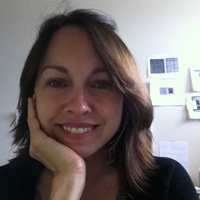
Harper Montgomery teaches in the Art and Art History Department at Hunter College in New York City. She has written for The Art Bulletin, Art Journal, and the Brooklyn Rail; and has organized exhibitions on art of the nineteenth-century, the twentieth-century, and the present for the galleries of Hunter College. Her book The Mobility of Modernism: Art and Criticism in 1920s Latin America was published last year by University of Texas Press and won the Arvey Foundation Book Award for distinguished scholarship on Latin American Art. Her current research concerns the ascent of artesaníawithin contemporary art spaces in Latin America during the 1970s.
Top image credit: Andisheh Avini, Untitled (wood, marquetry, assorted minerals), 2015. Photo credit Emily Hodes, courtesy Marianne Boesky Gallery.
CWA Picks for August 2018
posted by CAA — Aug 02, 2018
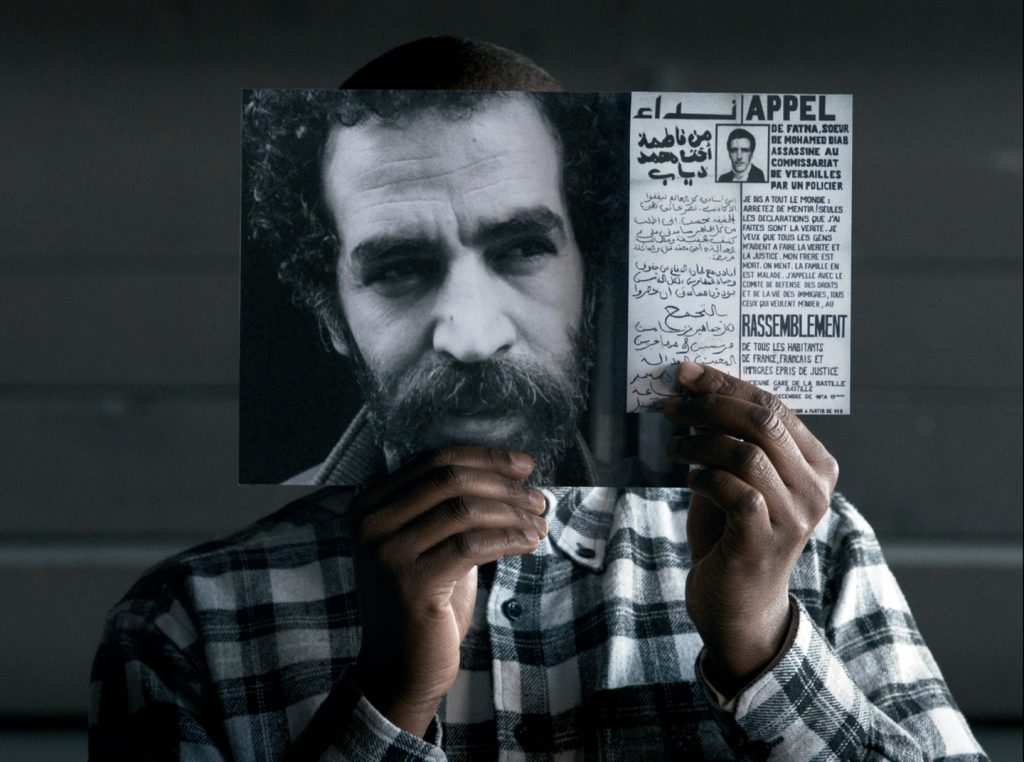
Bouchra Khalili, The Tempest Society, 2017. Video. © Bouchra Khalili / ADAGP, Paris, 2018. Courtesy Bouchra Khalili and Galerie Polaris, Paris.
CAA’s Committee on Women in the Arts selects the best in feminist art and scholarship to share with CAA members on a monthly basis. See the picks for August below.
Pussy, King of the Pirates
July 14–September 8, 2018
Maccarone Gallery
300 S. Mission Road
Los Angeles, CA
By now the summer gallery group show is a well-worn and fairly stale exhibitionary trope. Guest curators are brought in to align artworks from the gallery’s roster of artists alongside a few choice loans. Pussy, King of the Pirates is perhaps the most vibrant example of the summer group show—one that attempts to put politics into coordination with a summer holiday.
The show, which gets its moniker from the Kathy Acker novel of the same name, is a collection of twenty “non-male” artists. That distinction is important as not all the artists share in an embrace of “womanhood” (whatever that may be), but each interrogates feminism’s expansive boundaries from their own conceptual and material practices. Highlights include the sublime, small, dark Monica Majoli painting of an ex-girlfriend (Black Mirror (Judie), 2012) and Laura Schnitger’s spangled pantyhose processional totems. Eleanor Antin’s sculptural portraits are brilliant, evocative, and alive; while Alison Saar’s sculptures hold the stoic center of the installation.
This vacation, for all its noise, is a respite for the politically engaged—a life-giving show full of possibility.
Banu Cennetoğlu
June 29–August 26, 2018
Chisenhale Gallery
64 Chisenhale Road
London E3 5QZ
If you visited Kassel during documenta 14, you will remember the insightful warning “Being Safe is Scary” on the Fridericianum by the Istanbul-based artist Banu Cennetoğlu. The quote comes from the posthumously published diary of a female Kurdish fighter that was the subject of the artist’s other documenta—this one shown in Athens—that better captured her interest in collecting, classifying, archiving and the politics of memory and knowledge. Idiosyncratically summing up the major concerns of her practice, along with their underlying obsession with “speaking for the others,” as recently described by the artist, her current exhibition at the Chisenhale Gallery comprises Cennetoğlu’s first commission by a UK Institution in the form of a major two-fold solo exhibition.
For her commission, Cennetoğlu has produced a new moving-image installation consisting of the artist’s own archive of digital images and videos sourced from various devices, such as mobile phones, computers, cameras and external hard drives. The work presents a continuous stream of unedited content, ordered in a chronological format from 2006 to 2018, and lasting 128 hours and 22 minutes. It is presented as a different six hour-long file each time the gallery is open. Tracing over a decade of personal, social and political change from the banality of life’s inconspicuous and conspicuous moments to salient moments of recent history, it comprises an important archive of our times marked by linearity and circularity that captures both the intersection of self and history as well the changes in image production and circulation. In conjunction with her installation Cennetoğlu also facilitated the distribution of The List in The Guardian newspaper on June 20, 2018, World Refugee Day. Compiled each year by UNITED for Intercultural Action, The List traces information relating to the deaths of 34,361 refugees and migrants who have lost their lives within, or on the borders of Europe since 1993. Since 2007, in collaboration with art workers and institutions, Cennetoğlu has facilitated updated versions of The List using public spaces such as billboards, transport networks, and newspapers. As a whole the exhibition thus effectively shows the impossibility of a complete separation of one’s own life from that of the other’s, and this drives Cennetoglu’s artistic explorations and its politics.
Huma Bhabha: We Come in Peace
April 17–October 28, 2018
Metropolitan Museum of Art
1000 Fifth Avenue
New York, NY
On the roof of the Metropolitan Museum of Art two monumental figures face off. One, a janus-faced twelve-foot-tall alien, and the other, one of the artist’s signature Benaam—a prostrate, crumpled figure which she often uses to stand in for the nameless dead in the Iraq and Afghanistan wars. Although the works look like they’re made from plastic, Styrofoam, and earth, they are cast in bronze to withstand the elements.
Other artists have approached the Met’s rooftop with bombastic aplomb, topping its paving stones with flashy trinkets (Jeff Koons) or complex structures (Doug and Mike Starn). Bhabha is spare, restrained, and as a result leaves the space—which otherwise serves as a picturesque lookout onto Central Park—charged with the lingering inhumanity of the United States’s protracted international incursions.
Walking around and between the figures one feels caught in a crossfire—between recognition and strangeness, life and death, possibility, and certitude.
Laure Prouvost: Ring, Sing and Drink for Trespassing
June 22–September 9, 2018
Palais de Tokyo
13, avenue du Président Wilson
Paris
The French, and now Antwerp-based, winner of the 2013 Turner Prize, Laure Prouvost has continued to do what she was originally distinguished for: the awesome, often seductive, complexity with which she enjoins objects, multimedia images, and sound with language, in surreal combinations of life- and art-inspired story telling, often directly addressing the viewer. Prouvost’s work adopts the form of independent stories where action mixes with reality in immersive installations that invite escapism through an evocative combination of films, sculptures, paintings, tapestries, and performances. Imaginative, sensuous and full of humor, her work examines the relationships between language, image and perception, trapping the visitors in situations of pleasure, doubt and incomprehension evincing a delectably intense—both intellectual and multisensorial—wonder underpinned from a radically feminine excess.
For this typically exuberant return home, her first solo show in a Parisian institution, Prouvost responds to global warming and transforms Palais de Tokyo into a space where nature is purported to have taken over from humanity. Inviting both intimate and expansive exploration and a polyvalent meeting of paradise and wasteland, the exhibition begins through a curved corridor covered in woven tapestries that lures the viewer into an unknown territory. This eventually evolves into a metallic network of manufactured objects, interwoven with branches, car mirrors, her signature raspberries, collages, newspaper clips as well as vases in the shapes of bottoms. Flowers indicate that nature has annexed the building’s architecture and the outside world has broken in. At the center of the exhibition, a large fountain of breasts is waiting to feed the viewer, a respite where one can reflect after discovering the atypical panoramas conceived by the artist. There, a new video reflexively incorporates some of the physical elements present in the exhibition, complementing the multifaceted confounding that the rest of her works achieve, and inviting the viewer to question her/his preconceptions of the world at large.
Bouchra Khalili: Blackboard
June 5–September 23, 2018
Jeu de Paume
1, place de la Concorde
75008 Paris
Bringing a large selection of her work from the past ten years, this extensive survey introduces the radically experimental multimedia and documentary practice of French-Moroccan artist Bouchra Khalili (born in Casablanca, 1975 and now living in Berlin). Khalili is known for films, video installations, photographs and silkscreens that enable members of minorities to perform strategies of resistance against power, while systematically seeking for a new collective voice by articulating subjectivity and collective history.
The exhibition premiers Twenty-Two Hours, a new film that investigates Jean Genet’s commitment to the Black Panther Party, reflecting on the essential connection between poetry and collective emancipation, as well as The Tempest Society a work produced for documenta 14 in Athens, illuminating the artist’s long term reflection on radical equality and art as a civic platform. It also brings together older works that capture a variety of central topics underpinning her critical exploration of past and present, marked by all kinds of borders and their crossing, a critique of history and the present condition of civic society and the rescuing of all kinds of silenced voices. Among them stands out her look at globalized trade from the perspective of migrant laborers (The Seaman, 2012); displacement and forced journeys whether in the Mediterranean (The Mapping Journey Project, 2008-2011 and the “Constellation” series, 2011) or from the Caribbean to the US (as in the photographic series “Wet Feet,” 2012), as well as different modes of belonging (the
“Speeches”, 2012-3), and in the multimedia installation Foreign Office, 2015, unexpected contexts of liberation movements, such as Algiers.
Pia Camil: Telón de Boca
August 11, 2018–
Museo Universitario del Chopo
Dr. Enrique González Martínez no. 10
Mexico City, Mexico
For years now Mexican artist Pia Camil has employed used t-shirts as a primary material in her practice—elegantly tying together nostalgia, global capital, and architectural intervention. For her installation at the Dallas Museum of Contemporary Art (Bara Bara Bara, 2017) the shirts were sewn together into large quilts and floated from the museum’s cavernous ceiling Viewers could poke their heads through these colorful “clouds,” effectively separating their heads from their bodies, and becoming the inhabitants of a surreal topography.
In this installation Camil has sewn together hundreds of black concert t-shirts, obtained through a sequence of events at the museum and the nearby tianguis. Markets, formal and informal, thus structure the creation and display of the piece—as value is exchanged both through the activity of trade and the transformation of the humble t-shirt into a large-scale work of art. That the t-shirts “speak” their own message (the “mouth” of the exhibition’s title) is a necessary complication to the artist’s gesture. In this way the work exists somewhere, as per the exhibition’s press release, between “the fetish, the ritual, and the everyday.”
2018 Professional Development Fellowships for Graduate Students Now Open
posted by CAA — Aug 01, 2018
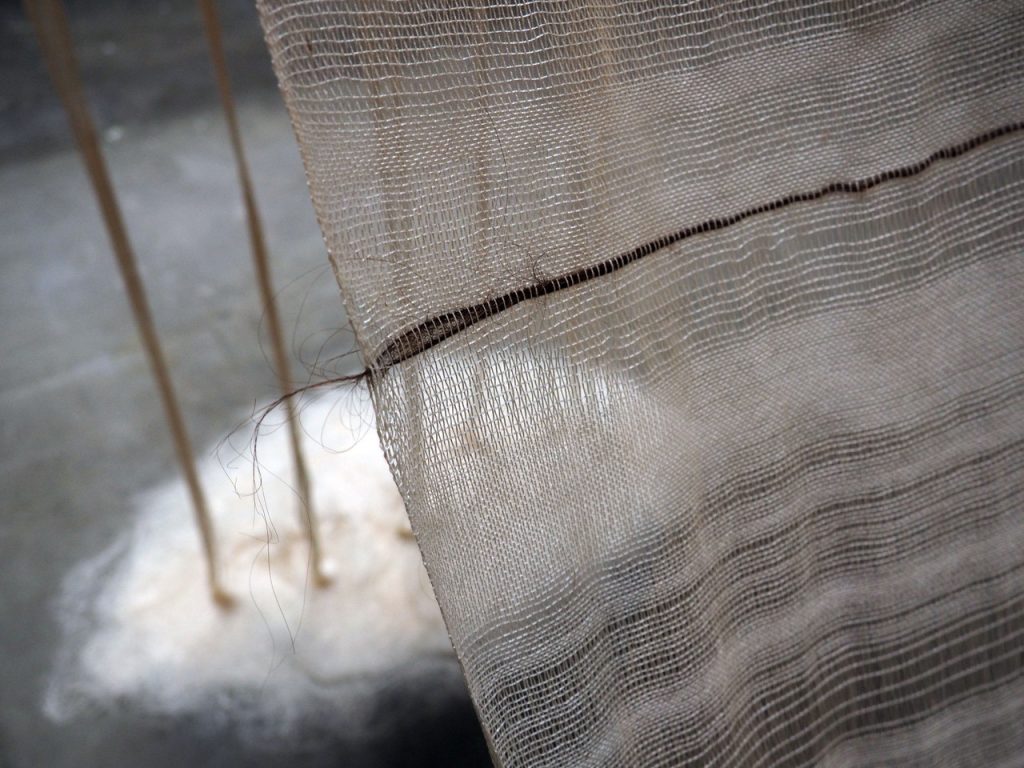
Brenna K. Murphy, Grief Work (Shroud). Detail. Cotton yarn and artist’s hair, 100 ft x 40 in. 2017 Professional Development Fellow in Visual Art.
The Professional Development Fellowships program supports promising artists, designers, craftspersons, historians, curators, and critics who are enrolled in MFA, PhD, and other terminal degree programs. Fellows are honored with $10,000 unrestricted grants to help them with various aspects of their work.
One award will be presented to a practitioner—an artist, designer, and/or craftsperson—and one award will be presented to an art, architecture, and/or design historian, curator, or critic. Fellows also receive a free, one-year CAA membership and complimentary registration to the Annual Conference. Honorable mentions, given at the discretion of the jury, also earn a free one-year CAA membership and complimentary conference registration.
CAA initiated its fellowship program in 1993 to help student artists and art historians bridge the gap between their graduate studies and professional careers. Past recipients include artists and thinkers such as Marin Sarve-Tarr (2015), Maggie Cao (2014), La Toya Ruby Frasier (2006), Risë Wilson (2002), Chitra Ganesh (2001), Miguel Luciano (2000), Miwon Kwon (1996), and Blake Stimson (1995), among many others.
ARE YOU ELIGIBLE?
CAA seeks applications from students who are current members; will receive their MFA or PhD degree in the calendar year 2019, following the year of application (2018 for the current fellowship cycle); and have outstanding capabilities and demonstrate distinction in their contribution to art history and the visual arts.
A jury of artists, curators, and other professionals will review all applications in fall 2018 and announce the recipients in January 2019.
HOW TO APPLY
DEADLINES
PhD Fellowship: October 1, 2018
MFA Fellowship: November 16, 2018
CONTACT
For more information about the CAA fellowship program, please contact Aakash Suchak, grants and special programs manager, at asuchak@collegeart.org.



